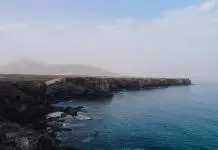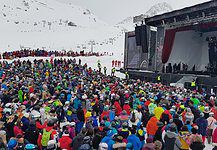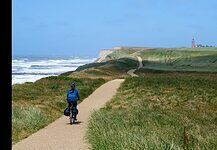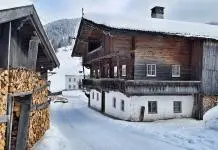Travel to Chile
Chile is an extremely long, narrow sliver of a country, skirting the western edge of the South American continent. The country is quite geographically isolated given the fact that it is either surrounded by water, high mountains or arid desert.
The major language spoken is Spanish. Chile’s bordering countries include Peru to the north, Bolivia to the northeast and Argentina to the east. The most remarkable thing about Chile’s geography is it’s 5000 km long coastline that opens onto the South Pacific Ocean. On the eastern side Chile is flanked by the Andes mountains.
There are many places of exceptional beauty to put on your Chile itinerary. Some of these are Easter Island with its huge Moai stone statues, the cold, surreal, icy beauty of Patagonia, the remote beauty of the Atacama Desert – the driest place on Earth, Torres del Paine National Park and the archipelago of Chiloe.
For cities, visit Old Town Santiago and discover the artsy neighbourhood of yesteryear and it’s Bohemian culture. Other notable cities are Concepcion, Valparaiso, Punta Arenas and Valdivia.
These places to visit in Chile are just the tip of the iceberg. We hope you enjoy this detailed and carefully prepared, comprehensive guide to all things related to visiting Chile.
If you’re looking for a tour to Chile, we recommend looking at the tours hosted with G Adventures, Viator and Intrepid Travel.
Visa Requirements for Chile
Here are some guidelines for Chile visa requirements. When the purpose of visiting Chile is tourism, the citizens of several listed countries do not require a visa to enter the country unless they are staying for more than 90 days. These include citizens of most EU countries, South American countries, the US, Canada, Mexico, Australia, New Zealand and some Asian countries.
Citizens of Granada, Greece, Indonesia and Peru can stay upto 60 days without a visa and those of Belize, Bolivia, Jamaica, Macau, Malaysia and Singapore 30 days.
However, Australian and Mexican citizens need to pay a reciprocity fee upon arrival by air in Chile.
Citizens of other countries need to apply for a visa for Chile in their country of residence, prior to travel.
Please check the current guidelines, of the visa requirements for your country and ways to get a Chile visa before you travel to Chile.
Important Cultural Information
The police are very reliable and efficient and they have a strong association with the military. Report any complaints or issues with them and they will assist you. Be polite at all times and do remember that bribing is unacceptable in Chile.
Many Chileans will be very friendly and eager to offer assistance if you should require it. They may go over and beyond the need of the situation so be patient and willing to accept advice, even if not required.
Even though your Spanish might be excellent, the nuances of Chilean Spanish are unique to the country and this will distinguish you as a foreigner. You may be referred to as ‘gringo’ by locals but this is not meant in a disparaging way.
Chileans may appear arrogant in their attitude but visitors who show humility will definitely be shown more welcome than others.
Try to avoid speaking about politics as this may get you into trouble with the locals, whose allegiance may reside in the most unlikely quarters.
The best time to visit Chile depends on the region you will visit. For Patagonia it is the summer, spring and autumn. Winter (June to August) is best avoided.
Banking & Money in Chile
The currency of Chile is the Chilean peso symbolized with the $ symbol and represented thus – CLP$. The Chilean peso is divided into 100 centavos. Frequently used Chilean coins are 10, 50, 100 and 500 pesos. Frequently used bank notes are 1000, 2000, 5000, 10,000 and 20,000 pesos.
The cash culture is very much prevalent in Chile and it is usual to pay for most things in currency and to carry larger amounts of cash around. However, credit and debit cards are widely accepted at most chain stores in big cities.
It’s advisable to not exchange currency at hotels and airports where rates are poor. Banco Santander ATMs at the airport add a surcharge of CLP3000 for cash withdrawal. If you are thinking of withdrawing large amounts, then this works better than exchange rates at exchangers.
Major banks in Chile are Banco Santander-Chile, Banco del Estado de Chile, Banco de Chile, Scotiabank Chile and others.
Medical Emergency Information
Some Emergency numbers to keep at hand when visiting Chile include the following:
- 131 Ambulance
- 133 Police Emergency
- 135 Drugs Hot Line
- 149 Family Violence
- 132 Firefighters
- 136 Mountain Rescue
- 137 Sea Rescue
- 147 Child Abuse
The names of some notable hospitals in Chile include Hospital del Salvador, Hospital Barron’s Luco Trudeau, Hospital Clinico Universidad de Chile, Hospital San Juan de Dios and Complejo Hospitalario Dr. Sotero del Rio.
If you’re looking for travel insurance, we are an affiliate of World Nomads.
Wi-Fi and Internet in Chile
The Chilean country code is +56 followed by nine digits.
Some of the main cell phone network providers are ENTEL, Movistar, Claro, Virgin Mobile, Wom, Falabella Movil and VTR Movil. SIM cards are available from these operators. Prepaid minutes need to be purchased to be able to talk. Money can be charged to a cellphone from almost all ATMs using a debit or credit card. A prepaid cellular phone can also be purchased for a fee. ID is required to activate the SIM.
Numerous cyber cafes are to be found around the country, especially in the large and mid-size Chilean cities. Places to find free computers with Internet connection are libraries called Biblioredes. Wi-Fi hotspots are to be found in airports, metro stations, cafes, malls and a number of public spaces. Make sure to set-up a VPN (like ExpressVPN) before using public Wi-Fi spots.
An unlocked smartphone is useful for loading a local SIM card with cellular network. The phone can be used as a Wi-Fi hotspot to tether your computer.
Arrival in Chile
The main aerial route of entry into the country is through Arturo Merino Benitez International Airport (SCL) or commonly called Santiago Airport.
The Chile airport is situated 15 km north-west of Santiago. LATAM Airlines is the major air carrier servicing this airport and bringing in non-stop flights from Europe (Frankfurt and Madrid are major hubs), the rest of the Americas and Oceania (Auckland and Sydney).
Some other international airports in Chile include those at Punta Arenas, Concepcion, Arica, Iquique, Antofagasta and Puerto Montt. The airport on Easter Island receives flights in from Santiago. A visit to Easter island is a must see on your Chile vacation.
Search for flights to Chile on Expedia.
Another means of entry into the country is via bus. This is the more cost effective answer to entry into Chile if you are already in South America. Daily buses from Mendoza, San Martin de Los Andes and Bariloche depart from Argentina. Arequipa in Peru has buses in to Chile. Bolivia plies buses to Santiago. Less frequent are buses from Brazil São Paulo to Chile. Some Bolivian and Argentinian routes may be at high altitude as they wind their way through the Andes. Factor in delayed travel times in these cases.
Areas of Chile
Here are the different regions of Chile that you will encounter on your Chile tours. Some of the major cities in Chile include the capital of Santiago, Concepcion, Valparaiso – a port, Punta Arenas- a southern city, Valdivia and more.
Northern Chile
Northern Chile includes Arica-Parinacota, Tarapaca, Atacama, Coquimbo and Antofagasta. The region features arid desert, the Andean Highlands and archaeological ruins.
Central Chile
Includes areas of Valparaiso, Santiago, O’Higgins and Maule. Some of the best loved ski resorts on the continent are to be found here.
Southern Chile
Includes Araucania, Volcan Villarrica, Biobio, Los Rios, Los Lagos and Nuble with Chiloe island.
Extreme South
This includes Aysen, Magallanes and Chilean Antarctica. A notable area is Western Patagonia with its surreal ice caps and fjords.
Easter Island
One of the most remote islands in the world with amazing stone sculptures from one of the most curious civilizations in the world. Also called Rapa Nui or Isla de Pascua and one of the best places to visit in Chile.
Transportation in Chile
The main hub for domestic flights in Chile is Santiago’s Arturo Merino Benitez International Airport (SCL). The main domestic airlines that serve the country are LATAM, Sky Airline and Jetsmart. LATAM has the largest network of the three.
Due to the elongated shape of the country flight times might be very long with usually more than one stopover. Punta Arenas to Arica may include 4 stops. LATAM is the only carrier plying between Santiago to Easter Island.
Passenger trains within the country are limited with lines running between Santiago, Chillan, Talca and Constitucion. The rail service is operated by Trenes Metropolitanos. Estacion Central is the main train station in Santiago.
Metro systems exist in big cities like Santiago and Valparaiso and are an easy, efficient way to get about. Las Micros are local buses that one can navigate using a contactless card called a BIP.
Car rentals are possible in larger cities. An International Driver Permit is required along with a passport and credit card.
Accommodations in Chile
Chile is home to many types of accommodations and you are particularly spoilt for choice in the big cities like Santiago when you tour Chile. Choose from luxury hotels, boutique hotels, mid-range and budget hotels.
Notable hotel chains have all set up residence here like the Sheraton, Ritz, Marriott, Hyatt and also mid-range hotels like Holiday Inn.
If on the backpacker trail, hostels and the local version of hostels – called ‘residencial’ are to be found even in the smaller cities. A number of accommodations are also available in the ski resorts like Portillo and Valle Nevado.
Another region with a concentration of interesting accommodation options is the Central Valley – the Cachapoal and Colchagua wine valleys.
The names of some notable and interesting accommodations in Chile are the Alto Atacama – a wilderness lodge in the midst of the world’s driest desert, the Tierra Patagonia Hotel and Spa overlooking the Torres del Paine National Park and several boutique hotels in the vineyard region.
What to Eat and Drink in Chile
Chile has a number of dishes that are unique to the country. In addition expect foods that are found in every Western country. In the north there are more vegetables and plentiful seafood with the long coastline.
Some unique Chilean food, drink and snack items to sample include:
- Lomo a lo pobre (beefsteak, fried potatoes, egg and onions)
- Chorrillana (larger than a Lomo a lo pobre)
- Sopaipillas (fried, round pastries)
- Curanto (A Chiloe dish- seafood, beef, chicken, pork, potatoes, and cheese burgers prepared in a pot)
- Pastel de choclo (corn casserole with ground beef, chicken, eggs, onions and raisins)
- Empanada de queso (cheese filled pastry pocket) and Empanada de pino (baked pie with ground beef, onion, raisins, boiled eggs and black olives)
- Cazuela de vacuno (beef soup with potato, rice, corn and squash)
- Cazuela de pollo (same as above with chicken) or Cazuela de pavo (with turkey)
- Lomito (pork steaks in a hot dog with lots of add ons)
Things to Do and See in Chile
There are so many things of majesty and wonder to see in Chile. We list a few things to do in Chile.
Visit the museums, galleries, bohemian hangouts of Old Town Santiago. You’ll be mesmerized by the bars, live music and the general artsy ambience of Old Town. Santiago’s cityscape is also a glorious vision with the snow-capped Andes in the distance. A great way to experience the city is on a Hop on Hop off tour.
The vineyards of the steep Andes is a fertile ground for some of the world’s best grape crop for wine making. Visit family owned wineries, or modern wineries to your heart’s content and sample some of the best Chilean wine.
Chiloe is a 41 island-strong archipelago worthy of exploration. Chiloe is particularly famous for its numerous wooden churches – given UNESCO World Heritage status. Chiloe is also famous for its wizard population.
The massive stone heads or Moai at the eerie location of Easter Island are a definite tourist draw. Easter Island or Rapa Nui is 2000 miles off the coast of Chile and is the repository of over 800 stone statues that were built by ancient tribes. How they were built and transported is a story in itself.
Tip: Start your day on Easter Island with the unforgettable sight of the sunrise at the Ahu Tongariki.
Visit the remote, bleak but beautiful Atacama Desert. Enjoy the prospect of excellent stargazing or witnessing the drama of the El Tatio geyser field with over 80 active geysers.
Torres del Paine National Park and Robinson Crusoe Island are also notable places to visit in Chile. Torres del Paine trekking is a popular activity in Chile.
Lastly, the icy blue glaciers and ice caps of Patagonia are a vision to behold. The whole atmosphere is surreal and out of this world and well worth the journey. It should be must-see on your Chile holidays and added to your list of what to do in Chile.
Here’s a great itinerary for traveling from Santiago to Patagonia.
Shopping in Chile
Some of the top souvenirs to pick up in Chile are:
- Chilean Lapis lazuli – a vibrant blue stone that is found relatively cheaply in Chile compared to Afghanistan (the other source of the stone in the world)
- Chilean wine – like the Cabernet Sauvignon, Merlot and Carmenere varietals are world famous
- Handmade Chilean Clay Pottery items or Greda used for cooking pastel de choclo
- Alpaca scarves, ponchos and warm clothing
- A Moai statue from Easter Island or the Crafts Markets in Santiago
- Copper utensils and jewelry
- Rugs woven by the Mapuche Indians
- Masks
- Pisco- a liquor made from grapes
- Merken – an unusual Chilean spice
Some of the major malls in Chile include Costanera Center, Mall Plaza Los Dominicos, Mall Sport and Mall Plaza Trebol among others. Centro Artesanal Santa Lucia is a well known flea and street market. Farmer’s Markets include Féria Pinto, for all kinds of fresh, local produce.
Chile’s Nightlife
The best places to go for the nightlife in Chile are Santiago, Valparaiso, La Serena, Concepcion, Iquique and Valdivia.
Chileans certainly know how to party and most will not hit the nightclubs until the early hours. That is the time when locals will start to party and it will get crowded.
Places to visit in Santiago for the nightlife are the many reggae clubs, dance clubs and Barrio Brasil – popular with the young people at Chile University. Bellavista is the neighbourhood to head to in Santiago for great party vibes. If you are looking for more upscale bars – going to Vitacura and Providencia is a safe bet.
You will find multi-story dance halls in what may look like abandoned buildings in Valparaiso. These are popular with the university crowd too. Iquique is a popular beach resort in Chile and some of the best nightlife is to be had in the Bajo Molles neighbourhood.
Safety Tips for Chile
Even though it is usual to carry currency around with you, given the fact that the cash culture is more prevalent in the country, try to keep currency of higher value in wallets to avoid confusion of using them as smaller notes. Wallets should be kept in secure places. If you do carry a backpack in a crowded area, preferably wear it on your front.
Pickpocketing, mugging and petty crime are common in major cities like Santiago and Valparaiso. Avoid wearing expensive jewelry and watches as this may make you a target for petty crime. Use the computer facilities at an Internet cafe when out and about rather than taking your laptop.
Chilean National Police or Carabineros are trustworthy and should be called at 133 for assistance in emergencies.
Caution should be exercised when taking pictures of naval ships and buildings. This may result in arrest.
Chile experiences frequent earthquakes and hence all buildings comply to certain safety rules. Aftershocks are also very common.
Conclusion
Chile is a very long country occupying the western coast of the South American continent. The spread of the narrow country over many latitudes means that the country is quite geographically diverse. Indeed the climate changes from the driest place on the planet – the Atacama Desert to the icy cold of the glaciers of Patagonia.
There is so much to see and do in this country that visitors are spoilt for choice. Given the elongated nature of the country, the 5000 km long coastline gives rise to an abundance of fresh seafood. This is the perfect retreat for the foodie and seafood lover.
A visit to Easter Island is a must-see for the history enthusiast. The huge monolithic, human-like statues on Easter Island were cared between 1250 to 1500 AD. Hundreds were miraculously transported on stone platforms called ‘ahu’ to the island’s perimeter. The statues represent ancient ancestors who had been deified.
Another place worthy of visiting is Patagonia with its icy realm of huge glaciers. Watching these ice giants up close and personal is an experience of a lifetime.
When you visit Chile, you can be sure of experiencing places, food and cultures that are unique and that you will not be able to find anywhere else.


























